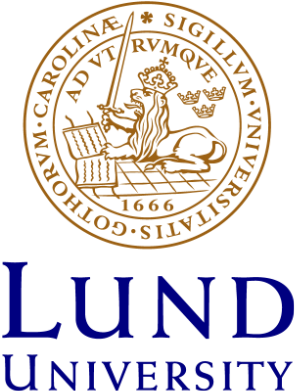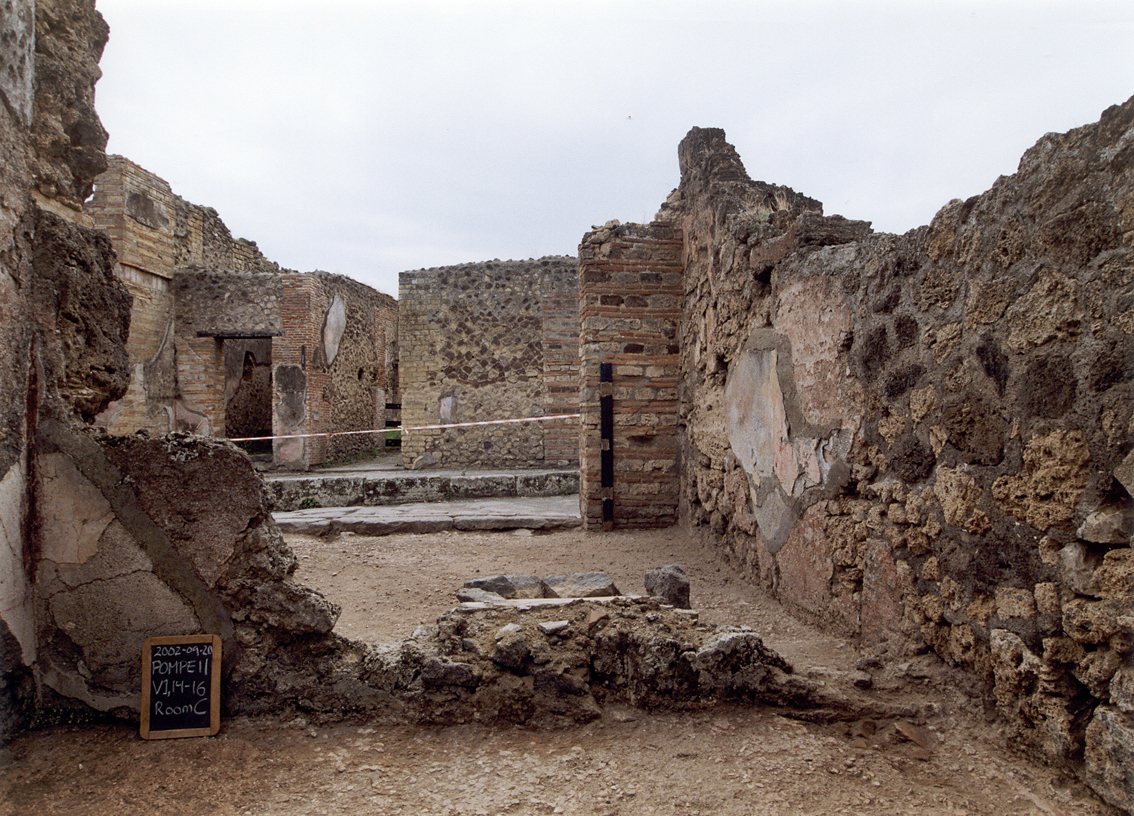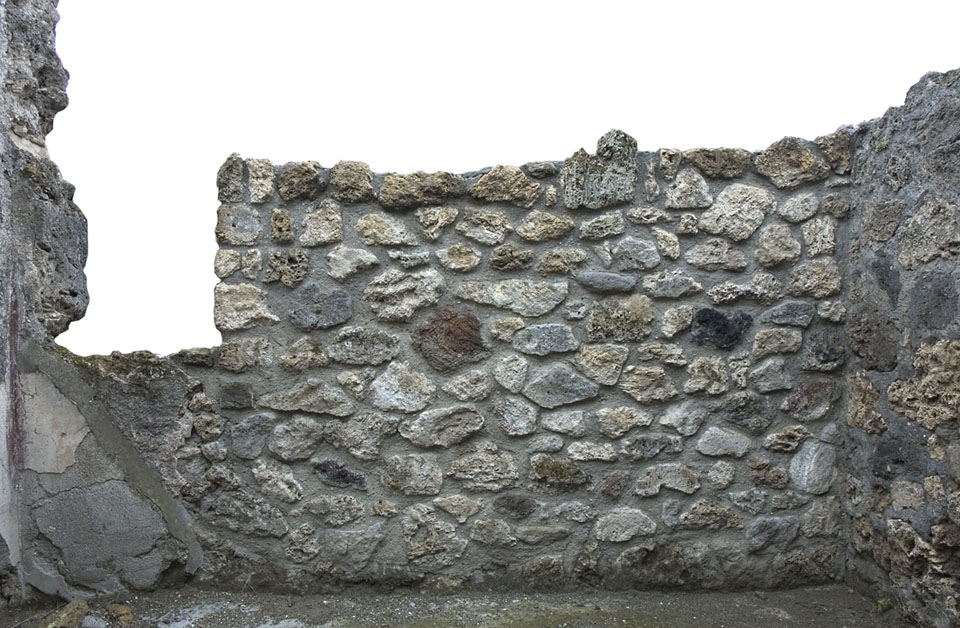West Wall
Description
Henrik Boman & Monika Nilsson
This wall is heavily destroyed. The northern part is completely dilapidated and only the lowest row of stones remains in situ.
The southern part of the wall, with an imprint of a wooden (modern) lintel to the window looking into room 14i, stands to a height of 1.6m, though there are traces of the stones that once were attached to the S wall. These can be seen to a height of at least 3m.
The wall is built in opus incertum with a majority of limestone and a few lava stones. The wall above the foundation is thin, only c. 0.23m thick, because of the niche in room 14i. The foundation is approx. 0.4m, which corresponds to the general width of the walls in the bakery.
Towards the N wall, no bounding stones are visible. The North wall is in this area heavily restored/reconstructed, though following the construction principles found in the other rooms, the internal dividing walls in the bakery abut directly to the north boundary wall of V 1,13 without bounding stones.
The window: An imprint of a reconstructed window to room V 1,14 is visible near the SW corner. The reconstructed lintel was presumably made of wood. (See further information on room 14i.) The window, as we can reconstruct it today, was placed c. 0.25 — 0.3m from the S wall, extending between 0.93 — 1.61m above the floor.
Today we cannot identify any traces of the ancient window frame and sill. The stone that might be a supporting structure of the window is found in one of the blocks of the northern doorframe of room 14i.
Plaster analysis
The same types of plaster as found on the other walls in room c are present here (I-II). The last layer (layer II; type F; 6A 3, 9-10) and the fine plaster is heavily weathered (IIb) though a vertical band of red in the corner is visible, confirming the same general design of the decoration as in the rest of room c.
The plaster layers (Layer I & II): The reddish plaster (layer I) is visible in several areas in both the room and in 14iand it is also found on this wall (type A; 6A 2, 7-8). It is partly covered by the white layer II (type F).




